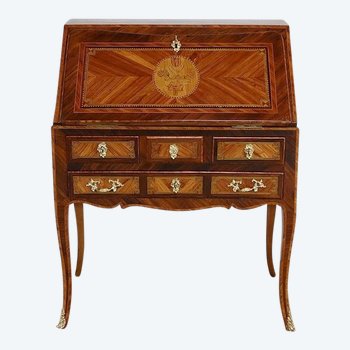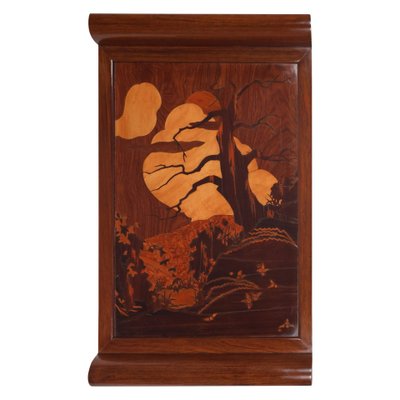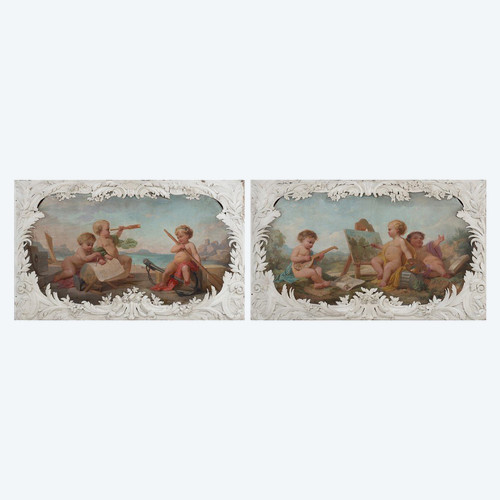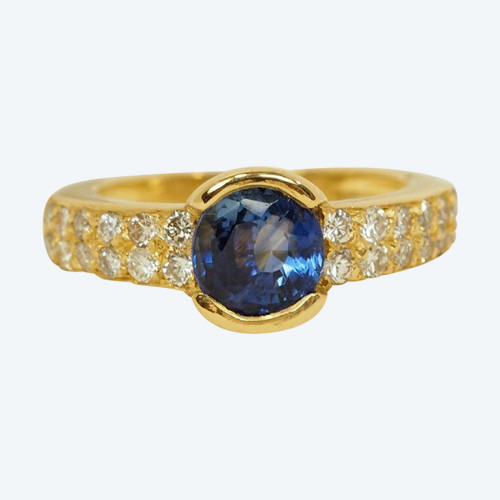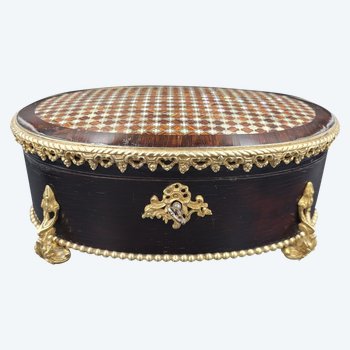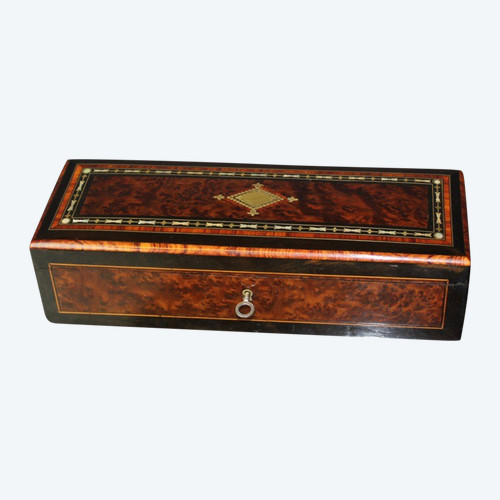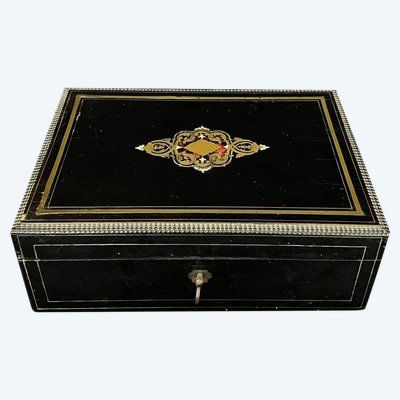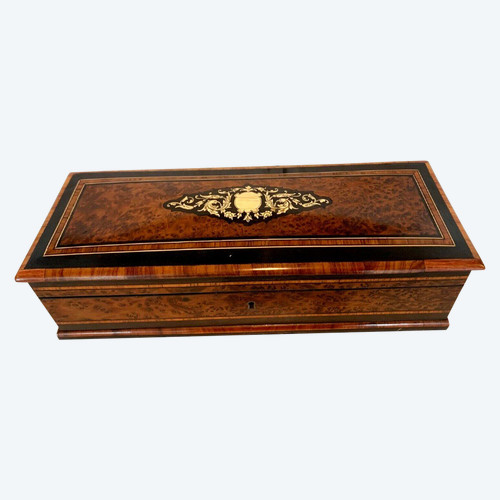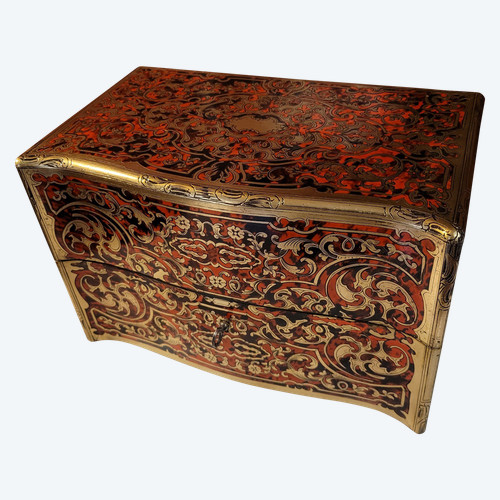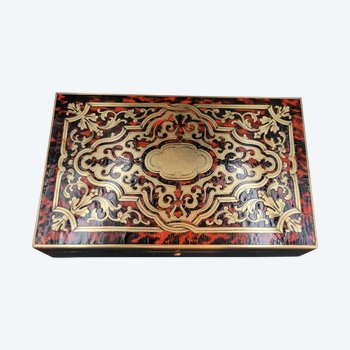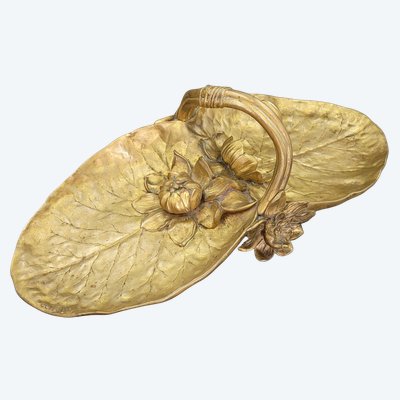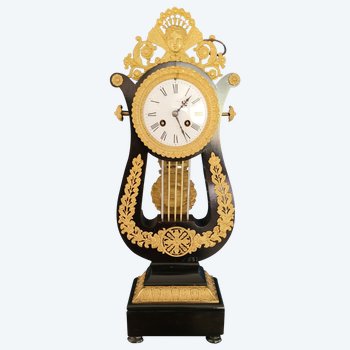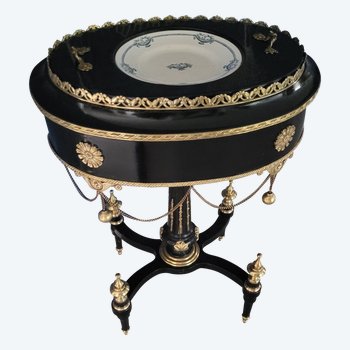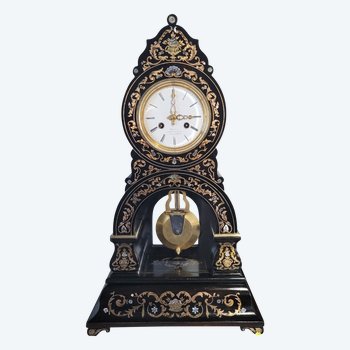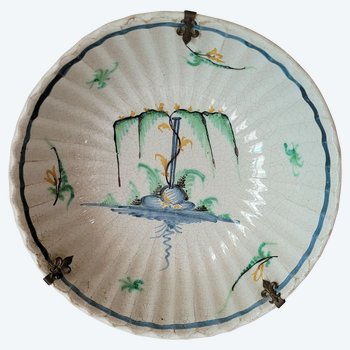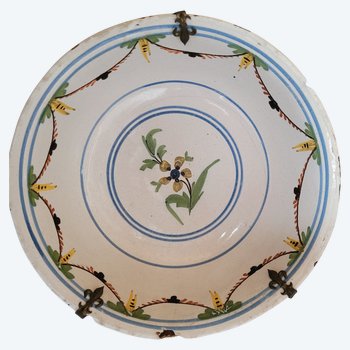This description has been translated and may not be completely accurate. Click here to see the original
Marqueterie Boulle box Signed House BOISSIER PARIS ( 1827 ) , ep. Napoleon 3 Napoleon III" Victorian
DESCRIPTION : Beautiful and elegant box in marquetry Boulle brass and mother of pearl, with nets and geometric patterns on the lid. The interior in beige silk original
Cartouche in front realized in chased bronze, key and functional lock.
Signed on the lock of the famous and prestigious house BOISSIER - Paris - and official supplier of the emperor Napoleon III
Overall in very good condition. The pictures are part of the description - Sold as is
Object in used condition.
A bit of history ....
The history of the House of Boissier is the first gourmet saga of a passionate entrepreneur in the service of excellence.
When, at the beginning of the 19th century, he left his province to conquer Paris, the young Bélisaire Boissier was armed only with his dream: to become a confectioner.
It was on a station platform, in front of a train full of chestnuts, that he came up with the idea of covering them with sugar in order to stop the decomposition process: he was thus the initiator of the production of marrons glacés. A few tests later, he invented his own glazing technique that he extended to other products. Finally, in 1827, he founded the Boissier company.
His first counter on boulevard des Capucines was so successful that the company quickly opened "Boissier" stores on the most beautiful Parisian streets: boulevard de Courcelles, boulevard des Capucines, avenue Raymond Poincaré, 17 rue Auber, 2 Place de l'Opéra, Avenue Victor Hugo and on the avenue des Champs-Elysées. The beautiful elegant women jostle each other to satisfy their sweet tooth. Strengthened by this success, Bélisaire married one of his employees, Anne Antoinette Barbier, who helped him develop his business. Attached to a job well done, they worked together to perfect their reputation with a privileged clientele.
From the imagination of the ingenious confectioner was born the now famous "bonbon boule": these pretty smooth balls filled with fruit made Boissier part of our gourmet heritage. A classic that will stand the test of time and the different directions taken by the company to renew itself.
In 1840, pastilles were very fashionable; we liked them flavored with mint, rose or jasmine. Pineapple pastilles were favored by the bourgeoisie and embodied "the candy of the theaters". Indeed, it was customary to carry sweets with you to go to the various distractions of Parisian life. The bankers of the stock exchange district were called "the eternal suckers of pastilles".
Among its intellectuals, Victor Hugo was the leader. The committed novelist befriended Bélisaire and made the Boissier house one of his favorite addresses. It is with a few inspired verses that he immortalized this greedy friendship: "Thanks to Boissier dear doves, happy at your feet, we fall. For we take the strong by bombs, and the weak by candy."
Luxury and voluptuousness
In 1857, Bélisaire decided to pass on his house to Cyrille Robineau, a young visionary who invested in the business, which he knew would flourish and become an important asset. This entrepreneur participated a little more in the prosperity of the Boissier house by developing new products but also by taking care of the packaging and the decoration of its stores. This is why we still find today boxes in precious wood, in marquetry boulle with inlays of various noble materials. These creations were made by famous and recognized table makers, like TAHAN or AlpH. GIROUX, quoted as official suppliers of the emperor Napoleon III. On the other hand, the Boissier house hired the services of the greatest luxury craftsmen, such as the House of Songny, to offer boxes and bags made of skin and silk of great refinement. His heirs called upon the best illustrators to create the drawings for the promotional posters and boxes: these drawings are still used today, notably on surprise bags, including those of Jacqueline Duché.
Cyrille Robineau, like his predecessor, was a great lover of the books he collected and maintained a special relationship with their authors at the end of the 19th century. One can no longer count the number of quotations of Boissier products in literary works and other artistic creations: Alexandre Dumas, Emile Zola, the Goncourt brothers or even the painter Gustave Emile Couder. The Parisian confectioner embodies for all luxury and voluptuousness.
An evocative power that Cyrille Robineau will always encourage by regularly naming his products in honor of illustrious publications, theaters and personalities: the candies "Gil Blas", "le bonheur des Dames"...
In 1867, in the Figaro :
Ref: KQ8T8OP2CO
 Solid Mahogany And Inlaid Art Deco Tray
390 € EUR
Solid Mahogany And Inlaid Art Deco Tray
390 € EUR

